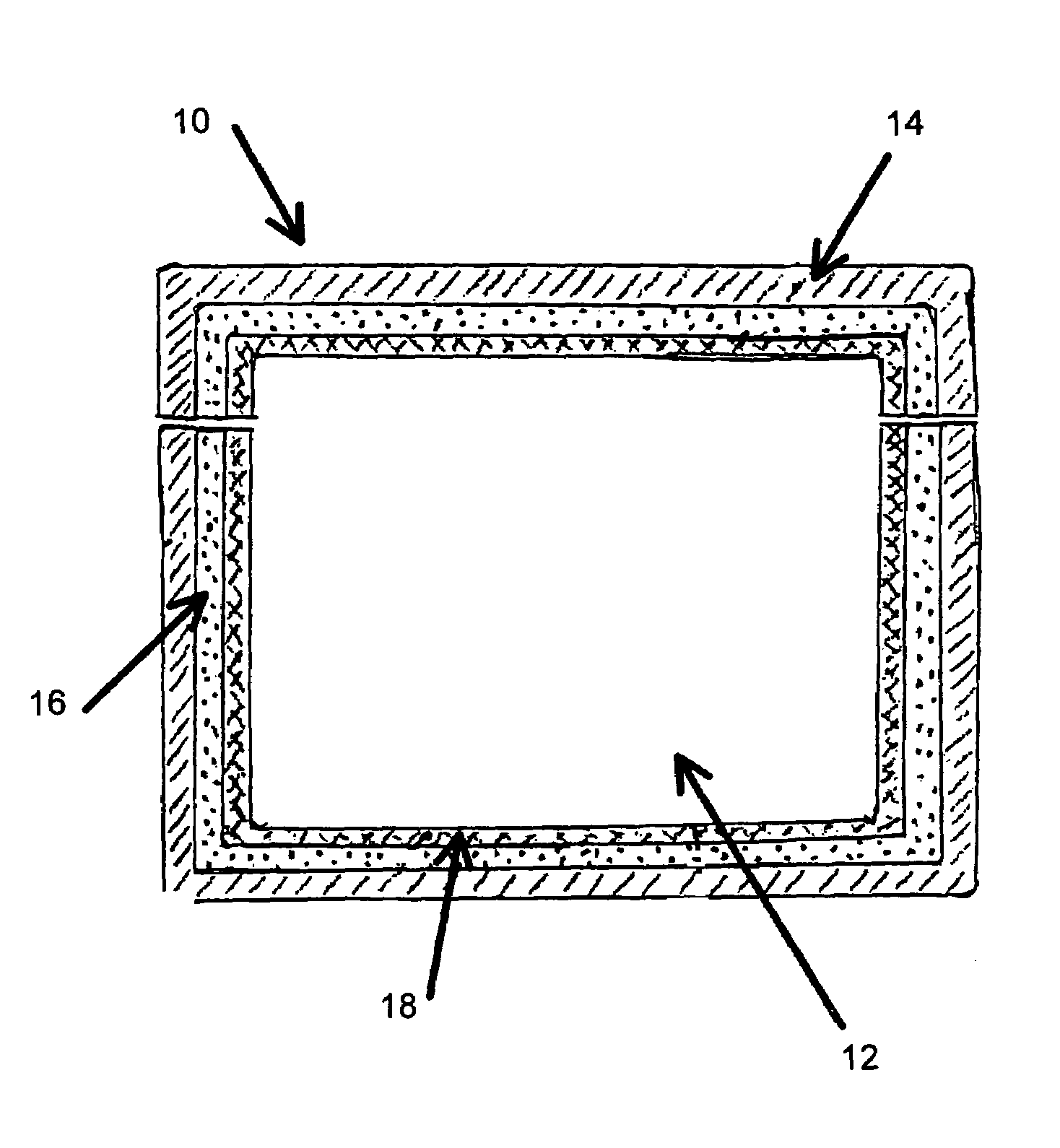Fire protection containers incorporating novel low free water insulation materials
a technology of low-free water and insulation materials, applied in safes, lighting and heating apparatus, furniture, etc., can solve problems such as difficult material handling, difficult quality control problems for roto-molding vendors, and water released from solidified insulation can migrate to and leak from pinhole defects, so as to facilitate an increase in the set-up time of insulation slurry and increase the sodium silicate content of mixture.
- Summary
- Abstract
- Description
- Claims
- Application Information
AI Technical Summary
Benefits of technology
Problems solved by technology
Method used
Image
Examples
examples
[0030]The Water Glass in all of the following compositions is generally a commercial grade sodium silicate solution which is about 40% solids, 60% water, and has a SiO2:Na2O ration of about 2:1 to 4:1 (in the range of about 2 to 4, and preferably about 3.2). Some specific examples are:
[0031]
AmountComponentin parts by weight1)Water Glass56Calcium Metasilicate0 to 2 Dibasic Sodium Phosphate6 to 12(Na2HP04 anhydrous)Calcium Chloride (monohydrate)5 to 8 or dehydrate form; flake or granularparticles, size about 2 to 5 millimeters)Propylene Glycol and / or Water-Soluble Oil0 to 3 2)Water Glass56Spray-dried Sodium Silicate (BriteSil)0 to 12(SiO2:Na2O ratio about 2 to 3.5)Calcium Oxide and / or Calcium Hydroxide4 to 10Calcium Chloride (type same as above)2 to 10Propylene Glycol and / or Water-Soluble Oil0 to 3 3)Water Glass56Spray-dried Sodium Silicate0 to 12(type same as above)Calcium Oxide and / or Calcium Hydroxide2 to 10Dibasic Sodium Phosphate (Anhydrous)4 to 12Calcium Chloride (type same as a...
PUM
| Property | Measurement | Unit |
|---|---|---|
| time | aaaaa | aaaaa |
| MIXING TIME | aaaaa | aaaaa |
| MIXING TIME | aaaaa | aaaaa |
Abstract
Description
Claims
Application Information
 Login to View More
Login to View More - R&D Engineer
- R&D Manager
- IP Professional
- Industry Leading Data Capabilities
- Powerful AI technology
- Patent DNA Extraction
Browse by: Latest US Patents, China's latest patents, Technical Efficacy Thesaurus, Application Domain, Technology Topic, Popular Technical Reports.
© 2024 PatSnap. All rights reserved.Legal|Privacy policy|Modern Slavery Act Transparency Statement|Sitemap|About US| Contact US: help@patsnap.com









